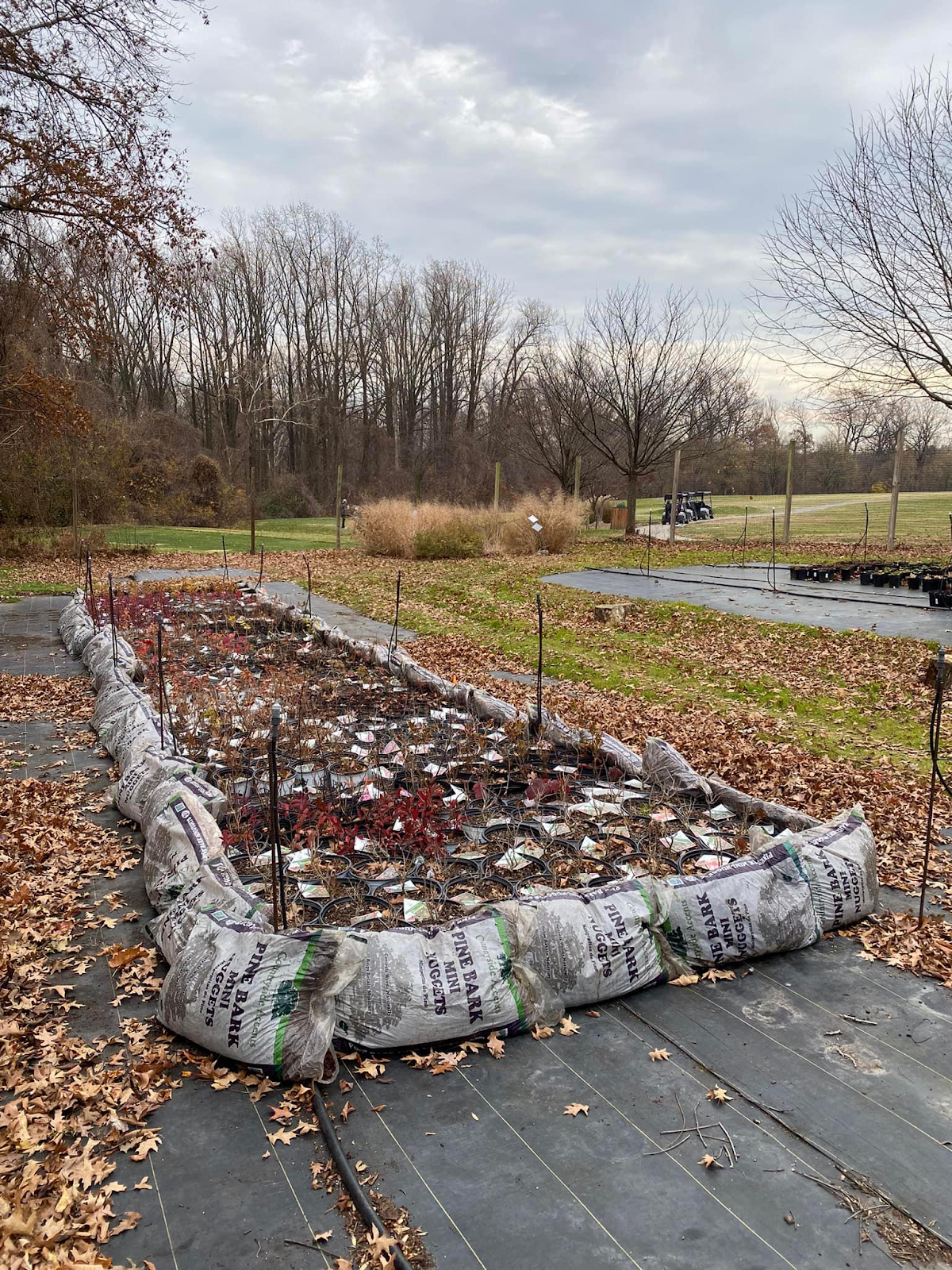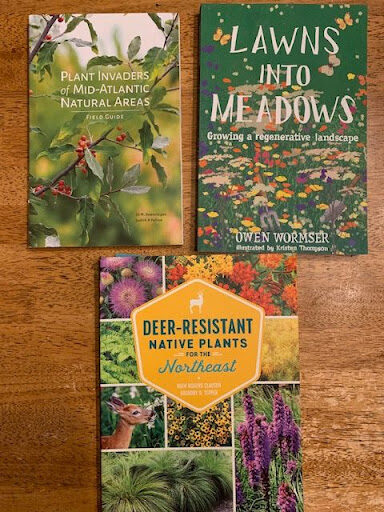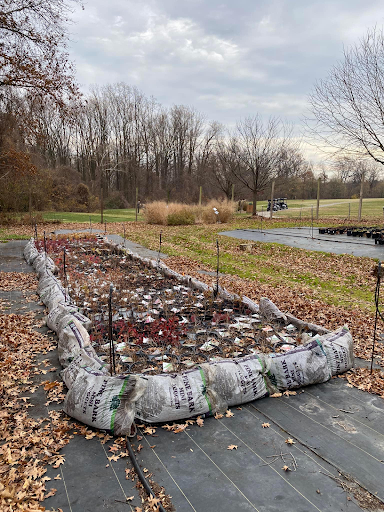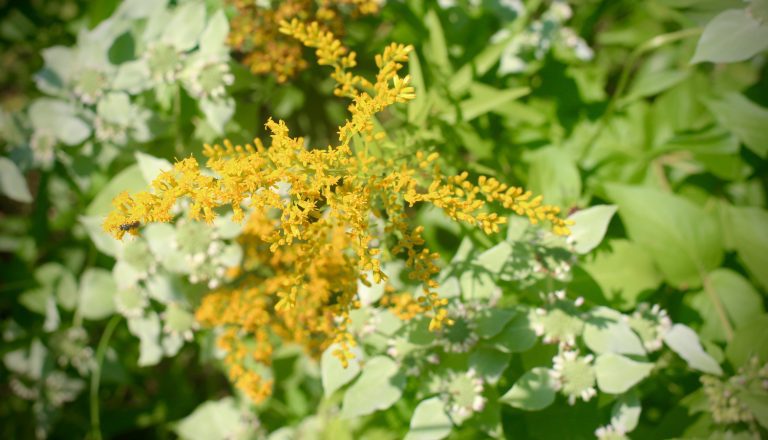Beating the Winter Blues at Herring Run Nursery
By Nursery Manager Rob Jenkins
I am often asked “What does the nursery do during the winter?”. My answer is . . . .not much, but lots! The reality is a little complex.
While the nursery closes for the season at the end of November, our work is not done. All of the native plant material that we have at season’s end is inventoried, pruned or cut back, and packed together in blocks. Blankets are placed over the perennials (they need a little extra TLC while they are sleeping). Mulch bags are placed around the outside of the blocks of woody plants to provide extra insulation, and to hold down the blankets on the perennials.

The winterizing process generally takes about two weeks to complete. Before the nursery staff is able to begin our “hibernation”, there are always a few other odds and ends to take care of. All of our winter prep is completed shortly before the end of fall and true winter begins.
Here are the three things that the nursery focuses on to avoid the winter blues. . . .
Rest
In the same way that our native plant babies require a period of dormancy to perform their best, so do we native plant enthusiasts and gardeners! Due to the seasonal and cyclical nature of the green industry, there isn’t a lot of time during the growing seasons for that to happen. For the nursery staff, winter is when we get to relax a bit from the rigors of the season, both at the nursery and in our home gardens. Are there tasks to work on? Of course, but one of the most important things we can do is get that time in to recharge in preparation for the spring.
But that doesn’t mean we get to rest on our (mountain) Laurels! Winter is an excellent time for planning, so why not enjoy some of that rest with a good book or two?!
Reading and Research

There is always more to learn and understand, especially with the “growing” interest in the benefits and uses of native plants. A vast repository of information on native plants and topics related to them is available to you at your local library (an underappreciated resource in the digital age!) and online. The three books pictured below are in my queue. I would also highly recommend any books by Dr. Doug Tallamy. A great voice for native plants, both educational and inspirational. Become a part of the native plant movement (the nursery is!) and visit his website: https://homegrownnationalpark.org/.
If you are looking for a little more “immediate gratification” and would like to focus on a specific native plant or native plant topic, not to worry! Here are some of our favorite web resources:
https://www.missouribotanicalgarden.org/plantfinder/plantfindersearch.aspx (General plant info)
https://www.wildflower.org/ (General plant info)
https://www-users.cse.umn.edu/~white004/personal/plantcalc.html (plant spacing calculator)
https://patterson.audubon.org/conservation/plants-birds (native plant lists for attracting birds, as well as garden templates).
The final thing to help us avoid the winter blues, AND help us with our native plant garden vision is to find our muse. . .
Inspiration
. . . .is where you find it! For the nursery staff that comes in a few different forms. We attend MANTS (Mid-Atlantic nursery Trade Show), which fills the entirety of the Baltimore Convention Center for the better part of a week. We participate in educational classes and seminars (in-person and virtual) offered by the ELA (Ecological Landscape Alliance), MNPS (Maryland Native Plant Society), CBLP (Chesapeake Bay Landscape Professionals), and more.

My personal preference is the “field practicum”. The nursery staff is fortunate to have the time to take a field trip or two to visit organizations that we work with. This gives us the opportunity to see where and how we might be able to improve Herring Run’s work. Just as valuable is to see neat-ure and native plants in action. Visits to Cylburn Arboretum, Adkins Arboretum, and in season, Mt. Cuba, Longwood Gardens are fantastic opportunities. No less so taking the time to forest bathe in our local greenways.
All of the above (educational opportunities and visits) are available for minimal to no cost.
And so, dear readers, with that I am going to take my own advice. My coffee is steaming, my books are in hand. I don’t have much, and have lots to do between now and spring. I hope you do as well!


